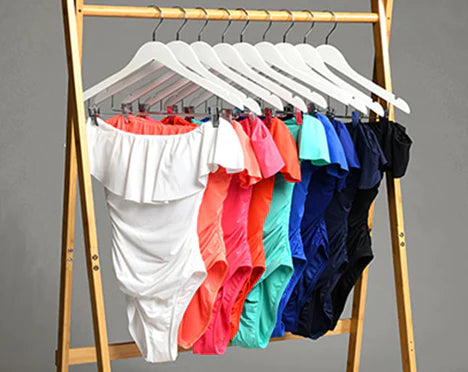Even though indoor tanning sessions exist, there are several other valid reasons why one can enjoy spending time in the sun for that golden glow.
For starters, a natural tan from the sun’s rays increases serotonin levels, which has been shown to reduce anxiety. Sunbathing for an even tan also creates vitamin D, which is beneficial to bones, teeth, skin, hair, and nails. Because of all that extra growth, you always return from your two weeks holiday eager for a hair and nail appointment.
While these may be seen as advantages, by now we all know the risks of premature aging and skin cancer that occur with sun exposure.
No dermatologist will ever advise you to get a tan. However, we understand that sometimes they end up being inevitable, so here are some guidelines for keeping your sun exposure as safe as possible.
Always, Always Avoid Sunbeds
Don't believe the claims made by certain salons that self-tanning in a sunbed can give you a 'healthy' tan. Essentially, tanning beds send out massive levels of UVA rays and virtually no UVB rays, (which increase vitamin D) which can increase the risk of skin cancer by 75%.
While there are other problems you might overlook, sunbeds shouldn't be one of them. If you're looking for a way to tan all year round then a fake tan ought to be your bestie to achieve a golden look without the risk of skin cancer.
Ok, we know, maybe fake tan isn't your thing! But trust us, we promise that things have changed. Modern tanning lotion formulations are much easier to use and don't have that aggressive fake tan fragrance anymore.
Apply the Right Sunscreen

When shopping for SPF it's important that you don't simply rely on any random one. Make sure you're looking for the term "wide spectrum" on the bottle, which says it will protect you from both UVA (aging) and UVB (burning) rays.
Also, rotate the bottle to see the UVA star rating. These show the SPF rating, which can vary from one (minimum protection) to five stars (ultra protection).
For any extended outdoor exercise, the Skin Cancer Foundation suggests using a water-resistant, broad-spectrum sunscreen with an SPF of 30 or higher. Regardless of the SPF, one ounce (two teaspoons) should be applied 30 minutes before going outside, and make sure to reapply every two hours or right after swimming or sweating.
Know Your Tanning Time
If you didn't know, your skin hits a tanning cut-off point when it can no longer create melanin (the tanning pigment), therefore lounging by the pool all day is worthless if you're only looking to get tanned. While it's normally two to three hours, everyone has a different cut-off point.
Seek Some Shade
While you're out in the sun it's always a good idea to take a pause from the sun from time to time. This will help reduce the UV intensity and your risk of sunburn, resulting in a healthier and longer-lasting tan.
Stay Covered
Remember to cover up with clothing, especially if you have any burnt areas, in addition to taking pauses and seeking shade.
One of our favorite recommendations is the Seaside Covers Hoodie, which is excellent for putting on after a dip (or once the sun sets), and will have you feeling just as comfortable as when you're wearing your favorite sweatshirt.
The open neckline with no drawstring makes it easy to put on and take off, and the extended back length provides all the coverage you need. It also features kangaroo pockets that keep your hands warm while also allowing you to store little items such as keys or sunscreen.
If you’re planning on doing any water sports it’s also a good idea to look into getting a rashguard. Since it has long sleeves it’s a great option for those that enjoy surfing to cover up while in the water.
Watch Out for Tanning Supplements
While some may say tanning supplements are a better option for helping you get a tan, take caution that these pills contain color additives that are similar to beta-carotene, the orange pigment found in carrots.
The additives are distributed throughout the body, particularly the skin, turning it an orange-like appearance once consumed. Although the FDA has allowed some of these ingredients for use in food coloring, they have not been approved for use in tanning agents.
They may be dangerous in high doses as those seen in tanning tablets. Canthaxanthin, the main ingredient in most sunless tanning pills, can appear in your eyes as yellow crystals, causing damage and impairing eyesight. Liver and skin concerns have also been reported.
Eat Sun-Friendly Food

There are some specific foods that are known to elevate the lycopene, the skin's own SPF, levels. It's an antioxidant found in tomatoes and other red and orange fruits and vegetables that can increase your sun protection by up to 33%.
There are also anti-inflammatory products that help soothe the skin after sun exposure, such as polyphenols, which are another type of antioxidant. Next time you're out in the sun, maybe instead of some chips by the pool, why not have sushi for lunch? This will be helpful since oily fish is high in omega-3 and has anti-inflammatory properties. After lunch order a green tea which will give you all the polyphenols you need.
Finally, dark chocolate has flavonoids that can help protect you from sunburn, while caffeine is known to lower your chance of skin cancer.
Don't Mix Spray Tan With Spf
Combining your fake tan and SPF in one product may sound like a fantastic way to get a suntan faster, but be aware that the component in fake tan (DHA) causes the SPF to break down.
It's pretty likely that all of the protecting SPF will have broken down by the time the product has shipped from its warehouse and arrived in your suitcase.
For this same reason, you should apply your fake tan at least 24 hours before going out in the sun, since adding SPF to a fresh tan can cause the ingredients to break down.
Keep Track of the Time
Between the hours of 10 a.m. and 4 p.m., the sun is at its harshest, so it's wise to be especially careful and take frequent pauses, as well as cover up and find a place in the shadow to relocate to. You should also make sure to reapply sunscreen every two hours, whether or not you've been swimming, and particularly during these hours.
Check Your Aftersun
This is very crucial when it comes to your water consumption, but in this situation, we're talking about skin hydration. A high-quality moisturizer and exfoliator should definitely be part of your skincare routine, especially after exposure to UV rays.
If your skin has burned, you should soothe it to avoid blisters and further irritation. Hydrated skin also means the tan you've been lusting for will last longer.
Although it may be tempting to apply an after-sun, many of these products have a high proportion of alcohol, which means they will dry out your skin even more, irritate it, and cause you to lose your tan even faster. Instead, replenish your hydration with a regular body lotion.
Actual Risks and Benefits of Sun Protection
There are numerous benefits of sun protection that are backed up by overwhelming data. Regular use of an SPF 15 or higher broad-spectrum sunscreen reduces your odds of developing squamous cell carcinoma by roughly 40%, melanoma by 50%, and premature skin aging by 24%, according to controlled research.
The sun's ultraviolet (UV) light damages the skin's cellular DNA, causing genetic changes that can lead to skin cancer, according to research. Solar UV has been designated as a confirmed human carcinogen by both the US Department of Health and Human Services and the World Health Organization, with research linking it to around 90% of nonmelanoma skin cancers and 86 percent of melanomas, as well as premature skin aging. UV radiation also damages the eyes, causing cataracts, eyelid malignancies, and other ocular skin cancers, such as melanomas.
In summary, unprotected sun exposure puts you at risk for a variety of disorders that can harm your skin permanently, disfigure you, and sometimes result in death. Regular usage of sun protection can help prevent any of these things from happening.
Conclusion
Sun and tanning aren’t a joke.
Head to our website to check out all the new pieces that can help you stay protected while looking super stylish!
Sources:
Ask the Expert: Does a High SPF Protect My Skin Better? | The Skin Cancer Foundation
Are Tanning Pills and Other Tanning Products Safe? | American Cancer Society





